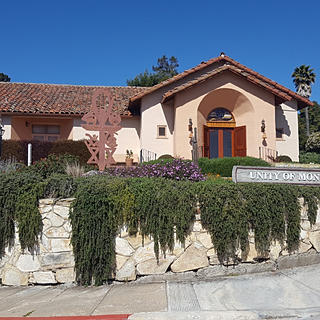Rev Michelle's Message October 27, 2022
- M Price
- Nov 3, 2022
- 3 min read
This Sunday is our annual Day of the Dead Remembrance Service. Every year during this special ceremony, we share our common human experience of grief and loss, and we honor our loved ones by lighting a candle and offering a special blessing. By engaging in ritual, song, and prayer, we are reminded of the sacredness of life and of the mystery of death. And we do all of this against the backdrop of the Mexican Day of the Dead celebration, learning about the ancient roots of this beautiful and complex tradition. We explore the Mexican perspective on death as a natural part of life and allow it to expand and inform our understanding of our own mortality. While we do have a few folks with Mexican heritage in our congregation, for most of us these traditions are outside of our own cultural heritage. For that reason, I would like to say a few words about cultural appropriation in relation to what we are doing with our Day of the Dead celebration at UMB. There are many different definitions of cultural appropriation out there, but here’s one I found that I think sums it up nicely: “Cultural appropriation takes place when members of a majority group adopt cultural elements of a minority group in an exploitative, disrespectful, or stereotypical way.” For me, the key words here are “exploitative, disrespectful, or stereotypical.” This is why we take time each year to learn about Day of the Dead including its historical origins and its cultural, social, and religious significance. Every year in the weeks leading up to Day of the Dead, I offer one or more educational opportunities for folks in our community to learn more about Day of the Dead. This always involves at least one intergenerational activity (kids and adults). One year I gave a workshop about the ancient roots of Day of the Dead, as well as a craft night where we painted ceramic skulls. Last year, we learned about how Day of the Dead is celebrated in Oaxaca, painted and decorated frames for our community altar, and watched the movie Coco. This year, we learned about the thousands-of-years-old annual migration of the monarch butterflies, who leave their homes in the U.S. and Canada and fly up to 3,000 miles to arrive at a particular forest in Michoacán, Mexico. We talked about the significance of the monarchs for the local indigenous Purepechas, who associate the arrival of the monarchs with the arrival of the souls of their departed loved ones for the Days of the Dead. I begin every Day of the Dead Remembrance Service with a “refresher course” on the history of this tradition, including the complex convergence of indigenous and colonial religions, the many ways the traditions are observed, and the meaning of the various elements such as the cempasúchil flowers (marigolds). I also begin my talk with an acknowledgment that I am not Mexican and that these are not my native traditions, but that I lived and studied in Mexico as a young person, and have spent a lifetime studying and admiring its rich culture and practices. In order to avoid the exploitation of cultural appropriation, I seek to always approach our observance of this tradition with respect, with understanding, and with deep reverence. We learn about a tradition that is not our own because it expands us; it opens us to new ways of seeing; it helps us to get out of our own limited cultural mindset and expose ourselves to something new—always with awareness, thoughtfulness, and respect. I hope this helps you understand our community’s celebration of Day of the Dead. If you have any questions, I would be happy to answer them. You can still bring in photographs or other mementos this Sunday for inclusion on our communal altar. I look forward to seeing you all on Sunday. Invite a friend! And be sure to plan to stay for the potluck after the service. Many Blessings, Rev. Michelle














Comments